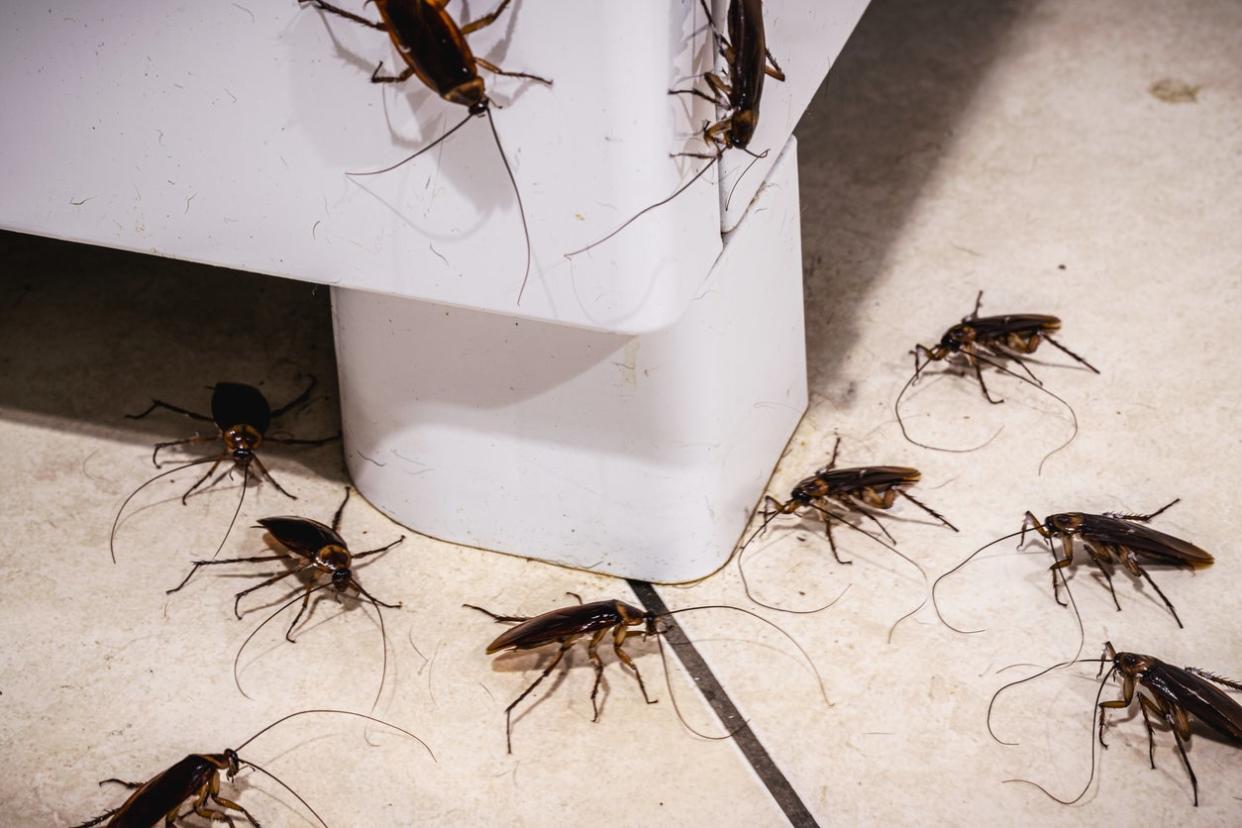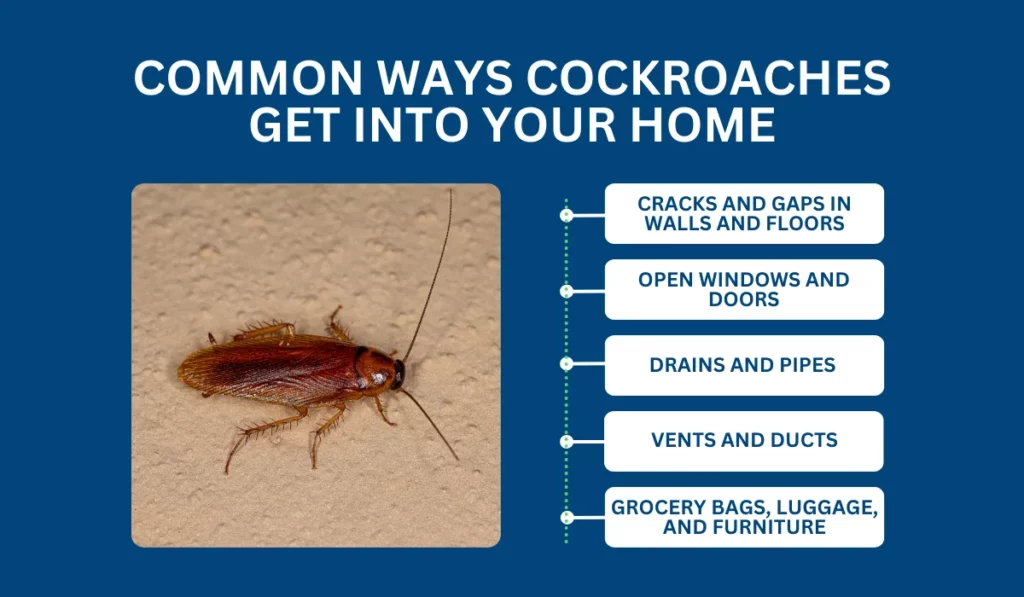Florida’s subtropical climate featuring mild winters, ample humidity, and year-round warmth enables cockroaches to remain active and reproduce continuously. In Pompano Beach, a thriving coastal community in South Florida, these adaptable insects can infiltrate single-family homes, short-term rentals, or commercial properties if leftover food scraps, damp nooks, or unsealed gaps provide easy entry. Once settled, roaches typically hide under appliances, inside wall voids, or along baseboards. This page explains why cockroaches flourish in Florida, how to recognize an infestation, and why partnering with a professional cockroach exterminator is vital to achieving a roach-free and hygienic environment.
Whether you oversee a home in Pompano Beach or manage rental properties for tourists and locals, detecting roaches early and applying specialized, multi-stage treatments shields occupants from health risks, occupant anxiety, and the frustration of repeated do-it-yourself efforts that commonly ignore concealed egg casings or hidden nests behind walls.
Why Cockroaches Thrive in Florida
Mild Winter Conditions
In colder regions, subfreezing weather naturally suppresses roach populations for months. Florida’s gentle cold season rarely dips below freezing, letting cockroaches feed, lay eggs, and mature indoors or outdoors year-round. Climate-controlled properties (around 65–85°F) remove any seasonal slowdown, enabling roaches to reproduce rapidly unless occupant or manager action intervenes.
Plentiful Food & Moisture
Roaches consume virtually any organic scraps unsealed pantry items, kitchen leftovers, or even pet food left overnight. In bustling Pompano Beach households or short-term rentals, occupant habits might inadvertently supply leftover crumbs if daily cleaning or waste disposal lags. Minor leaks under sinks or A/C condensate lines offer moisture in Florida’s humidity, making roach nesting simpler.
Accelerated Reproduction
A single female roach carries multiple egg casings (oothecae), each harboring multiple embryos that hatch within weeks in Florida’s year-round warm climate. Overlooking initial droppings or sightings often spawns robust colonies hidden behind walls or under furniture if occupant or professional detection remains slow.
Various Cockroach Species
Florida hosts multiple roach types:
- German Cockroach: Small, prolific breeders found in kitchens or bathrooms.
- American (Palmetto) Cockroach: Larger, often outdoors but moving inside for food or cooler air.
- Smoky Brown Cockroach: Prefers damp mulch or shrubbery around properties, occasionally infiltrating indoors.
- Brown-Banded Cockroach: Occupies drier, elevated areas inside cabinets or electronics.
All species can flourish if occupant measures or specialized extermination don’t curb their life cycles, especially in Florida’s mild winter that barely slows roach activity.

Telltale Signs of a Cockroach Infestation
- Roach Sightings, Especially by Day
- Roaches normally hide in darkness. Observing them in daylight usually indicates dense nesting.
- Kitchens or bathrooms commonly reveal roaches scurrying when lights switch on.
- Roaches normally hide in darkness. Observing them in daylight usually indicates dense nesting.
- Droppings & Smear Marks
- German roach droppings appear as black pepper-like specks; American roach feces are larger, cylindrical pellets.
- In humid corners, roaches might leave brownish smear traces on walls or floors.
- German roach droppings appear as black pepper-like specks; American roach feces are larger, cylindrical pellets.
- Egg Casings (Oothecae)
- Capsule-like containers holding multiple embryos, found behind furniture, under sinks, or near baseboards.
- Confirm active breeding cycles within the property.
- Capsule-like containers holding multiple embryos, found behind furniture, under sinks, or near baseboards.
- Unpleasant, Musty Odors
- Larger roach colonies produce a potent, oily smell from droppings or bodily secretions.
- The more pungent the odor, the more substantial or established the infestation.
- Larger roach colonies produce a potent, oily smell from droppings or bodily secretions.
- Chewed Packaging
- Roaches gnaw cardboard, paper, or thin plastic to reach stored foods.
- Ragged edges on pantry boxes or bags confirm roach feeding activity.
- Roaches gnaw cardboard, paper, or thin plastic to reach stored foods.
- Occupant or Guest Reports
- In multi-unit or lodging properties, occupant sightings of roaches can imply a widespread infiltration if occupant or manager checks are lacking.
- Quick occupant or manager action deters roaches from traveling occupant belongings or adjacent units.
- In multi-unit or lodging properties, occupant sightings of roaches can imply a widespread infiltration if occupant or manager checks are lacking.
Why Overlooking Roaches Is Hazardous
Bacterial Contamination
Roaches traverse unsanitary locations like dumpsters or drains collecting pathogens (e.g., salmonella, E. coli). Once inside, they contaminate countertops, stored foods, or utensils with these bacteria, raising occupant health concerns.
Allergen Triggers
Cockroach droppings, shed skins, and saliva harbor allergens, aggravating asthma or respiratory conditions, particularly in children. Allowing roaches to proliferate leads to heavier droppings, raising allergen levels indoors.
Fast Colony Growth
A single roach produces multiple egg casings, each containing multiple nymphs. In Florida’s near-constant warmth, roach eggs hatch within weeks, letting new roaches mature rapidly unless occupant or manager detection steps in.
Occupant Stress & Brand Damage
Roach sightings undermine occupant confidence in property cleanliness particularly in short-term rentals or hospitality near Pompano Beach. Guests encountering roaches often leave negative reviews or occupant complaints if roaches endure unresolved.
Increased Treatment Expense
Minor roach issues handled early usually call for minimal occupant disruption like targeted baits or partial spraying. Delaying until roaches occupy multiple rooms or hide behind walls demands repeated chemical usage or occupant displacement, raising occupant frustration and overall cost.

Why a Professional Cockroach Exterminator Is Essential
Complete Infestation Assessment
A cockroach exterminator systematically checks wet corners, under sinks, behind appliances, or around baseboards for droppings, egg casings, or smear marks. Confirming roach species German, American, etc. clarifies whether interior kitchen/bath coverage or perimeter coverage is paramount for occupant comfort.
Precise Baiting & Insecticide Usage
Professionals typically position gel baits or bait stations under sinks, along corners, or behind appliances roaches’ runways ensuring ingestion of slow-acting poison that eventually kills nests. Residual sprays near baseboards or cracks finish roaches crossing treated paths, surpassing occupant tries with random aerosols or foggers missing deeper roach hideouts.
Insect Growth Regulators (IGRs)
IGRs interrupt roach nymph maturity, ending egg-laying potential. Paired with adulticidal baits or sprays, they target roaches across each life stage. Do-it-yourself occupant approaches often ignore nymph stages, letting roach populations rebound after adults die.
Minimal Chemical Risks
Occupant overuse of sprays or foggers can drench living spaces, endangering occupant or pet health. Exterminators place insecticidal dust or gels precisely where roaches hide behind cabinets, in wall cracks backed by occupant synergy (cleaning up food scraps). Gel baits remain discrete, lethal to roaches yet safer for people or pets.
Follow-Up & Prevention
Roach egg casings hatch weeks after occupant sightings vanish. Occupant synergy or second exterminator visits ensure newly hatched nymphs also meet lethal conditions. Occupants gain housekeeping tips like sealing leftover food or plugging leaks to keep roaches from returning in Florida’s mild winter environment.
Common Methods for Cockroach Treatments
- Inspection & Roach Species ID
- Exterminators explore kitchens, bathrooms, behind appliances, or damp corners for droppings, egg casings, or smear marks.
- Determining roach species clarifies whether interior kitchens/baths or perimeter lines require immediate focus.
- Exterminators explore kitchens, bathrooms, behind appliances, or damp corners for droppings, egg casings, or smear marks.
- Gel Baits & Bait Stations
- Placed under sinks, behind appliances, or in corners spots roaches traverse—for slow-acting toxin ingestion.
- Roaches feed on poison, carrying it to hidden nests, poisoning more members over time.
- Placed under sinks, behind appliances, or in corners spots roaches traverse—for slow-acting toxin ingestion.
- Residual Sprays & Dust
- Sprays or dust along baseboards or cracks kill roaches crossing treated areas later.
- Blending dust for deeper nest cavities plus occupant synergy ensures greater coverage.
- Sprays or dust along baseboards or cracks kill roaches crossing treated areas later.
- Insect Growth Regulators (IGRs)
- Halt roach nymph progress into reproductive adults.
- Often paired with adulticidal baits or sprays for complete life cycle disruption.
- Halt roach nymph progress into reproductive adults.
- Exclusion & Sealing
- Occupants or pros fill foundation cracks, fix door sweeps, or repair leaks roaches require for moisture.
- Removing readily available water or food sources starves roaches of essential resources.
- Occupants or pros fill foundation cracks, fix door sweeps, or repair leaks roaches require for moisture.
- Sanitation & Clutter Reduction
- Occupants discard food scraps daily, store leftover foods in sealed bins, or thoroughly wipe surfaces.
- Restricting cardboard or paper clutter removes nesting corners behind boxes or furniture.
- Occupants discard food scraps daily, store leftover foods in sealed bins, or thoroughly wipe surfaces.
- Maintenance & Follow-Up
- Roach egg casings might hatch weeks post occupant sightings. Re-check occupant or staff feedback or sticky traps for renewed droppings.
- Roach egg casings might hatch weeks post occupant sightings. Re-check occupant or staff feedback or sticky traps for renewed droppings.
Additional baits or occupant housekeeping finalize occupant peace of mind that roaches are eliminated.

Service Area: Pompano Beach
While roaches exist statewide in Florida’s mild winter climate, this page emphasizes roach solutions for Pompano Beach, where occupant synergy and specialized extermination ensure thorough or preemptive roach elimination. Florida’s gentle cold season rarely limits roach feeding or breeding, meaning occupant or manager readiness plus professional exterminator coverage remains critical for total roach removal.
Why Choose Us
Florida-Centered Methods
We integrate recognized cockroach treatments, gel baits, insect growth regulators, crack-and-crevice dusting alongside occupant housekeeping steps suitable to Florida’s climate. Occupant synergy like storing leftover food properly and controlling moisture paired with thorough exterminator coverage kills adult roaches and upcoming nymphs, outpacing occupant do-it-yourself attempts ignoring deeper egg casings.
Detailed Examinations
Before distributing bait or spraying, technicians meticulously investigate kitchen corners, bathrooms, or behind large appliances for egg casings, droppings, or smear marks. Identifying roach species clarifies if interior or perimeter coverage is crucial for occupant comfort.
Precise, Safe Product Usage
Professionals apply insecticides or dust exactly in roach hideouts, baseboards, wall voids, behind cabinets keeping occupant floors mostly free. Gel baits remain tucked away but lethal to roaches, lessening occupant or pet chemical contact.
Prevention & Housekeeping Tips
After roaches are removed, occupant synergy like sealing cracks, discarding daily crumbs, or repairing leaks stops new roach infiltration. This occupant-professional team approach cements roach-free results under Florida’s year-round breeding advantage.
Follow-Up & Re-Checks
Because roach egg cases hatch weeks after occupant sightings disappear, occupant synergy or second visits confirm newly hatched nymphs also face lethal conditions. Occupants finalize trust that roaches won’t reappear from missed egg casings or concealed nest pockets.
Next Steps
Spot roaches when lights flicker on, notice black pepper-like droppings in cabinets, or find egg casings behind appliances? Contact us to learn more or schedule your service. Our cockroach treatments in Pompano Beach unite comprehensive property checks, correctly placed baits and insecticidal dust, occupant-friendly sealing and cleanliness steps, plus essential follow-up fully removing roach colonies and blocking future arrivals.
Take swift action to protect occupant or guest health from roach-borne bacteria, preserve occupant confidence in your property’s cleanliness, and steer clear of occupant dissatisfaction or negative reviews if you run short-term rentals. Rely on our Florida-based cockroach exterminator knowledge to pinpoint, eradicate, and deter roaches effectively, halting their mild winter breeding advantage so occupant comfort and hygiene remain undisturbed year-round.
